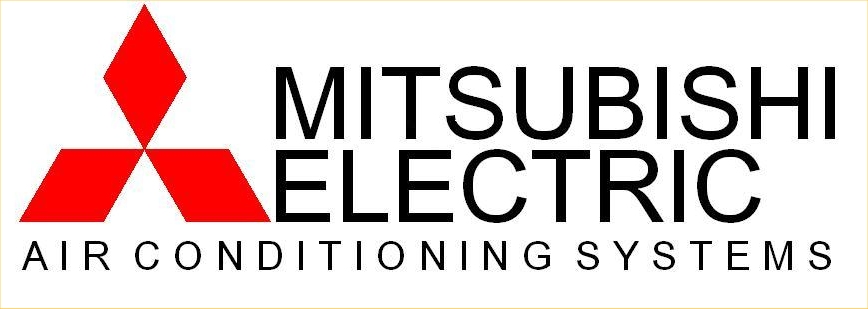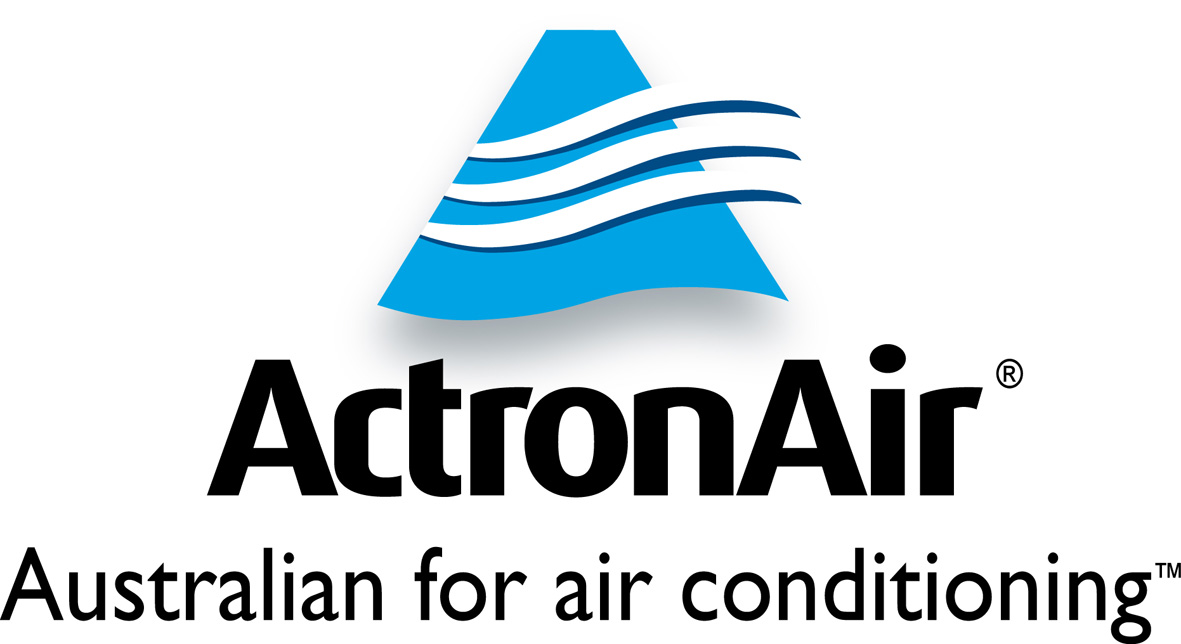- Air changes per hour (ACH)
The number of times per hour that the volume of a specific room or building is supplied or removed from that space by mechanical and natural ventilation.
- Air circulation
A method for natural or forced motion of air
- Air conditioner
An appliance, system, or mechanism designed to dehumidify and extract heat from an area. Usually this term is reserved for smaller self contained units such as a residential system.
- Air conditioning
The simultaneous control of all, or at least the first three, of the following factors affecting the physical and chemical conditions of the atmosphere within a structure: temperature, humidity, motion, distribution, filtration and purification, most of which affect in greater or lesser degrees human health or comfort.
- Air conditioning unit
A piece of equipment designed as a specific air treating combination, consisting of means for ventilation, air circulation, air cleaning and heat transfer with control means for maintaining temperature and humidity within prescribed limits.
- Air handler, air handling unit (AH or AHU)
A central unit consisting of a blower, heating and cooling elements, filter racks or chamber, dampers, humidifier, and other central equipment in direct contact with the airflow. This does not include the ductwork through the building.
- Ambient temperature
The temperature of the medium surrounding an object. In a domestic or commercial system having an air-cooled condenser, it is the temperature of the air entering this condenser.
- Baffle
A partition used to divert a flow of liquid or vapour.
- British thermal unit (BTU or Btu)
Any of several units of energy (heat) in the HVAC industry, each slightly more than 1 kJ. One BTU is the energy required to raise one pound of water one degree Fahrenheit, but the many different types of BTU are based on different interpretations of this “definition”. In the United States the power of HVAC systems (the rate of cooling and dehumidifying or heating) is sometimes expressed in BTU/hour instead of watts.
- C.O.P.
Co-efficient of Power.
- Capacitor
A device made with two conductive plates separated by an insulator or dielectric.
- Capacity or Load
A refrigeration rating system usually measured in Btu/h.
- Chiller
A device that removes heat from a liquid via a vapor-compression or absorption refrigeration cycle. This cooled liquid flows through pipes in a building and passes through coils in air handlers, fan-coil units, or other systems, cooling and usually dehumidifying the air in the building. Chillers are of two types; air-cooled or water-cooled. Air-cooled chillers are usually outside and consist of condenser coils cooled by fan-driven air. Water-cooled chillers are usually inside a building, and heat from these chillers is carried by recirculating water to a heat sink such as an outdoor cooling tower.
- Circuit breaker
A device designed to open under an abnormal amount of current flow. The device is not damaged and may be used repeatedly
- Coil
Equipment that performs heat transfer to air when mounted inside an air handling unit or ductwork. It is heated or cooled by electrical means or by circulating liquid or steam within it.
- Compressor
A refrigeration or air-conditioning system pump that circulates refrigerant through pipes between an outdoor and indoor unit using pressure.
- Condenser
A component in the basic refrigeration cycle that ejects or removes heat from the system. The condenser is the hot side of an air conditioner or heat pump. Condensers are heat exchangers, and can transfer heat to air or to an intermediate fluid (such as water or an aqueous solution of ethylene glycol) to carry heat to a distant sink, such as ground (earth sink), a body of water, or air (as with cooling towers).
- Condensing unit
That part of the refrigerating equipment which operates to return vaporised refrigerant to liquid by condensation
- Constant air volume (CAV)
A system designed to provide a constant air flow. This term is applied to HVAC systems that have variable supply-air temperature but constant air flow rates. Most residential forced-air systems are small CAV systems with on/off control.
- Controller
A device that controls the operation of part or all of a system. It may simply turn a device on and off, or it may more subtly modulate the set point of components. Most controllers are automatic but have user input such as temperature set points, e.g. a thermostat. Controls may be analog or digital.
- Cycle of refrigeration
A complete course of operation of a refrigerant back to the starting point, measured in thermodynamic terms; also used in general for any repeated process for any system.
- Damper
A plate or gate placed in a duct to control air flow by increasing friction in the duct.
- Deep lake water cooling
The heat is rejected to deep lake regions to cool homes and offices, reducing the energy costs.
- Dew point (of air)
The temperature at which a specified sample of air, with no moisture added or removed, would be completely saturated. The temperature below which air on being cooled gives up moisture or dew.
- Duct
Specialized housing for the air flow.
- Energy efficiency ratio (EER)
A rating of the seasonal efficiency of air-conditioning or heating units in cooling mode.
- Evaporator
A component in the basic refrigeration cycle that absorbs or adds heat to the system. Evaporators can be used to absorb heat from air or from a liquid. The evaporator is the cold side of an air conditioner or heat pump.
- External static pressure (ESP)
The measure of static pressure losses from ductwork, fittings, dampers, grilles, and any other devices located in the airstream. ESP listed in the equipment specification charts is the amount of external static loss that the unit lower can overcome at a specific CFM.
- Fan coil unit (FCU)
A small terminal unit that is often composed of only a blower and a heating and/or cooling coil, as is often used in hotels, condominiums, or apartments.
- Flow
A transfer of fluid volume per unit time.
- Fresh air intake (FAI)
An opening through which outside air is drawn into the building. This may be to replace air in the building that has been exhausted by the ventilation system, or to provide fresh air for combustion of fuel.
- Furnace
A component of an HVAC system that adds heat to air or an intermediate fluid by burning fuel (natural gas, oil, propane, butane, or other flammable substances) in a heat exchanger.
- Grille
A facing across a duct opening, often rectangular in shape, containing multiple parallel slots through which air may be delivered or withdrawn from a ventilated space. The grille directs the air flow in a particular direction and prevents the passage of large items.
- Heat exchanger
A device used to transfer heat from warm or hot surfaces to colder surfaces. Used to cool liquid going to the evaporator by passing heat to cold vapour leaving the evaporator. Evaporators and condenser are also heat exchangers in fact, if not in name.
- Heat gain, heat load, heat loss
Terms for the amount of cooling (heat gain) or heating (heat loss) needed to maintain desired temperatures and humidities in controlled air. Regardless of how well-insulated and sealed a building is, buildings gain heat from sunlight, conduction through the walls, and internal heat sources such as people and electrical equipment. Buildings lose heat through conduction during cold weather. Engineers use a heat load calculations to determine the HVAC needs of the space being cooled or heated.
- Heat pump
An air-conditioning system can reverse the direction of refrigerant flow to provide either cooling or heating to the indoor space.
- HSPF (Heating Season Performance Factor)
A rating of the seasonal efficiency of a heat pump unit when operating in the heating mode.
- Humidity, Relative
The ratio of water vapour pressure of air compared with the vapour pressure it would have if saturated at its dry-bulb temperature. Very nearly, the ratio of the amount of moisture contained in the air compared with what it could hold at the existing temperature.
- HVAC
A term which stands for Heating, Ventilation, and Air Conditioning.
- Indoor unit
The air handler of an air-conditioning system, which contains a heat exchange coil, filters, remote signal receiver and fan and provides conditioned air into the space.
- Intermediate fluid
A liquid or gas used to transfer heat between two heat exchangers. An intermediate fluid is used when the hot and cold fluids are too bulky (such as air) or difficult to handle (such as halocarbon refrigerant) to directly transfer the heat.
- INVERTER Technology
Mitsubishi Electric’s MUY, MUZ, MXZ and all P-Series outdoor units use INVERTER-driven compressor technology (Variable Frequency Drive) to provide exceptional indoor cooling and heating. By responding to indoor and outdoor temperature changes, these systems reduce power consumption by varying the compressor speed to meet load requirements providing for extra energy savings. The system operates only at the levels needed to maintain a constant and comfortable indoor environment. CITY MULTI® product line also incorporates INVERTER technology.
- Louver
1. Components made of multiple smaller blades, sometimes adjustable, placed in ducts or duct entries to control the volume of air flow. When used inside of ducts, their function is similar to that of a damper, but they can be manufactured to fit larger openings than a single-piece damper.
2. Blades in a rectangular frame placed in doors or walls to permit the movement of air.
- Makeup air unit (MAU)
An air handler that conditions 100% outside air. Typically used in industrial or commercial settings, or in “once-through” (blower sections that only blow air one-way into the building), “low flow” (air handling systems that blow air at a low flow rate), or “primary-secondary” (air handling systems that have an air handler or rooftop unit connected to an add-on makeup unit or hood) commercial HVAC systems.
- Microprocessor
An electrical component consisting of integrated circuits, which may accept, store, control, and output information.
- Minimum outside air
The lowest amount of fresh air flow that can be allowed into a recirculating system. This limit is sent to ensure that the interior air remains safe and comfortable to breathe.
- Outdoor unit
A component of an air-conditioning system which contains compressor, propeller fan, circuit board, and heat exchange coil. It pumps refrigerant to/from indoor unit.
- Outside air damper
An automatic louver or damper that controls the fresh air flow into an air handler and modulates to the most energy efficient setting.
- Packaged terminal air conditioner (PTAC)
An air conditioner and heater combined into a single, electrically powered unit, typically installed through a wall and often found in hotels.
- Packaged unit
An air-handling unit, defined as either “recirculating” or “once-through” design, made specifically for outdoor installation. They most often include, internally, their own heating and cooling devices. Very common in some regions, particularly in single-story commercial buildings. Also called a rooftop unit (RTU)
- Plenum space
An enclosed space inside a building or other structure, used for airflow. Often refers to the space between a dropped ceiling and the structural ceiling, or a raised floor and the hard floor. Distinct from ductwork as a plenum is part of the structure itself. Cable and piping within a plenum must be properly rated for its fire and smoke indices. See also: plenum chamber
- Power
The rate of doing work, measured in watts, or kilowatts.
- Power factor
A comparison of the true power (watts) to the apparent power (volt amps) in an A.C. circuit.
- Printed circuit
A board on which a predetermined pattern of printed connections has been made.
- Psychrometric
The study of the behavior of air-water vapor mixtures. Water vapor plays an important role in energy transfer and human comfort in HVAC design.
- Refrigerant
A gas/liquid substance used to provide cooling by direct absorption of heat. Mitsubishi Electric products use environmentally-friendly R410A refrigerant.
- Refrigerant lines
The tube or pipe which carries the refrigerant liquid from the condenser or receiver of a refrigerating system to a pressure-reducing device.
- Refrigerating system
A combination of parts in which a refrigerant is circulated for the purpose of extracting heat.
- Rooftop unit (RTU)
Same as packaged unit.
- Short cycling
The starting and stopping of a compressor in rapid succession.
- Smoke damper
A damper or adjustable louver designed to augment the ventilation of a space during a fire.
- Split-ducted System
A system comprised of a remote outdoor condensing unit connected by refrigerant pipes to a matching, ducted indoor air handler with minimal field installed ductwork and a wired remote controller.
- Split-ductless System
A system comprised of a remote outdoor condensing unit connected by refrigerant pipes to a matching, non-ducted indoor air handler and a remote controller. Special cases for introducing ventilated air may call for limited ducting to air handler from outside.
- Split-zoning System
A system comprised of a remote outdoor condensing unit connected by refrigerant pipes to a matching, indoor air handler that conditions single or multiple room space that is conditioned to a set temperature and is independent from other rooms within the same structure.
- Static pressure
Pressure against walls of tube, pipe or duct.
- System
General term used to refer to the set or a subset of components that perform a specific HVAC function within a building.
- Terminal unit (TU)
A small component that contains a heating coil, cooling coil, automatic damper, or some combination of the three. Used to control the temperature of a single room.
- Thermal zone
An individual space or group of neighboring indoor spaces that the HVAC designer expects will have similar thermal loads. Building codes may require zoning to save energy in commercial buildings. Zones are defined in the building to reduce the number of HVAC subsystems, and thus initial cost. For example, for perimeter offices, rather than one zone for each office, all offices facing west can be combined into one zone. Small residences typically have only one conditioned thermal zone, plus unconditioned spaces such as garages, attics, and crawlspaces, and basements.
- Underfloor air distribution (UFAD)
A method for providing ventilation and space conditioning by using the air plenum below a raised floor to distribute conditioned air through diffusers directly to the occupied zone.
- Variable air volume (VAV)
An HVAC system that has a stable supply-air temperature, and varies the air flow rate to meet the temperature requirements. Compared to constant air volume systems, these systems conserve energy through lower fan speeds during times of lower temperature control demand. Most new commercial buildings have VAV systems. VAVs may be bypass type or pressure dependent. Pressure dependent type VAVs save energy while both types help in maintaining temperature of the zone that it feeds.
- Wet-bulb temperature
The temperature of air as measured by a thermometer with the bulb covered with a water-saturated wick. Equilibrium temperature of water evaporating into air when the latent heat is supplied by the sensible heat of the air.
- Zone (zoning)
A single or multiple room space that is conditioned to a set temperature and is independent from other rooms within the same structure.
- ΔT
(Delta T) a reference to a temperature difference. It is used to describe the difference in temperature of a heating or cooling fluid as it enters and as it leaves a system.

 02 9938 6599
02 9938 6599












